Like many, the past few years have reshaped my work life, thankfully removing the daily commute grind. Now, venturing into the office just twice a week, mornings can be a bit of a scramble to find the quickest way to get there. Living on London’s outskirts, my usual route involves the Underground, a journey that takes nearly 40 minutes for a mere 5.5km as the crow flies. Navigating the city streets or subterranean tunnels significantly extends the travel distance.
On days when laziness prevails or important meetings loom, a cab becomes the default. Alternatively, when virtuous intentions strike, my trusty bicycle gets dusted off. Pedaling directly takes just under half an hour, but my preferred quieter route to avoid traffic adds another five minutes, often resulting in a slightly sweaty office arrival.
The allure of ditching the train for my bike is strong, yet the marginally shorter travel time hardly justifies the added effort and inconvenience. Could an e-bike be the game-changer? What are the real costs involved, and could the initial investment be offset by lower running expenses in the long run?
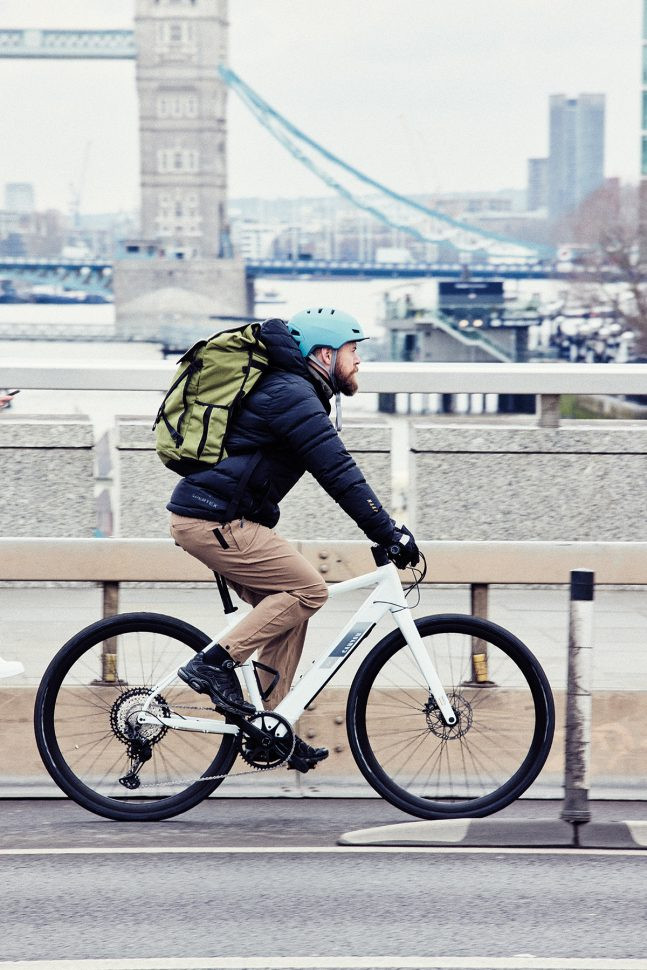 E-bike vs car vs train
E-bike vs car vs train
To investigate, I embarked on a decidedly unscientific race, pitting three transport options against each other. The criteria: speed, economy, enjoyment, and office arrival freshness. Join me as I explore which mode reigns supreme in the London commute battle.
Train Commute Experience
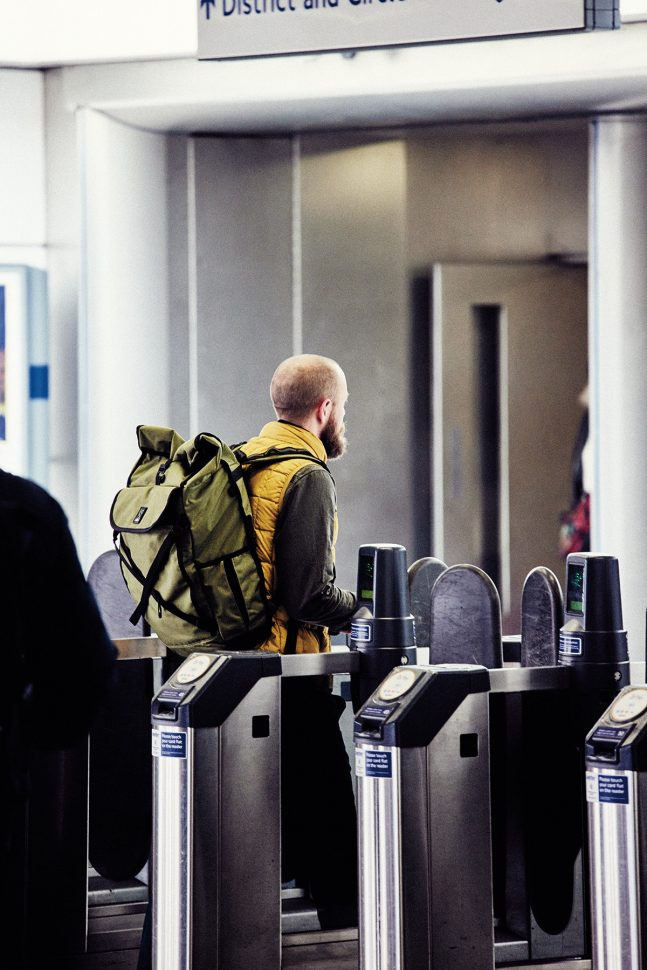 Underground train arriving at station for London commute
Underground train arriving at station for London commute
My typical workday starts with aiming to be at my desk by 9 am. This translates to catching the 8:27 train, scheduled to arrive at 8:50. My journey begins at 8:14 sharp, honed over years to an 11-minute walk to the station – beating Google’s estimate by a full three minutes. The walk itself, however, is a less-than-pleasant trek alongside a noisy four-lane road, hardly a healthy or enjoyable start to the day, drowning out my headphone music with traffic roar.
On more relaxed mornings, a station coffee stall treat is a welcome indulgence. However, today’s late start leaves no room for dawdling. It’s a power-walk along the busy road, arriving at a predictably crowded platform. District Line seats are usually scarce at this hour, but luck is on my side today.
The Tube journey is a sensory overload – noisy, packed, and stuffy. Reaching my destination platform, the clock reads 33 minutes. Not bad progress, but factoring in the above-ground navigation through the commuter throng to the office door, the total journey clocks in at 39 minutes. It’s hard to believe this was a five-day-a-week routine.
Still, in the grand scheme of commutes, it’s far from the worst. Under an hour and costing £3.20. Yet, the stress of train connections, the commuter sardine experience, and concerns about subterranean air quality, combined with missed exercise opportunities, leave much to be desired.
Cab Commute: A Pricey Affair
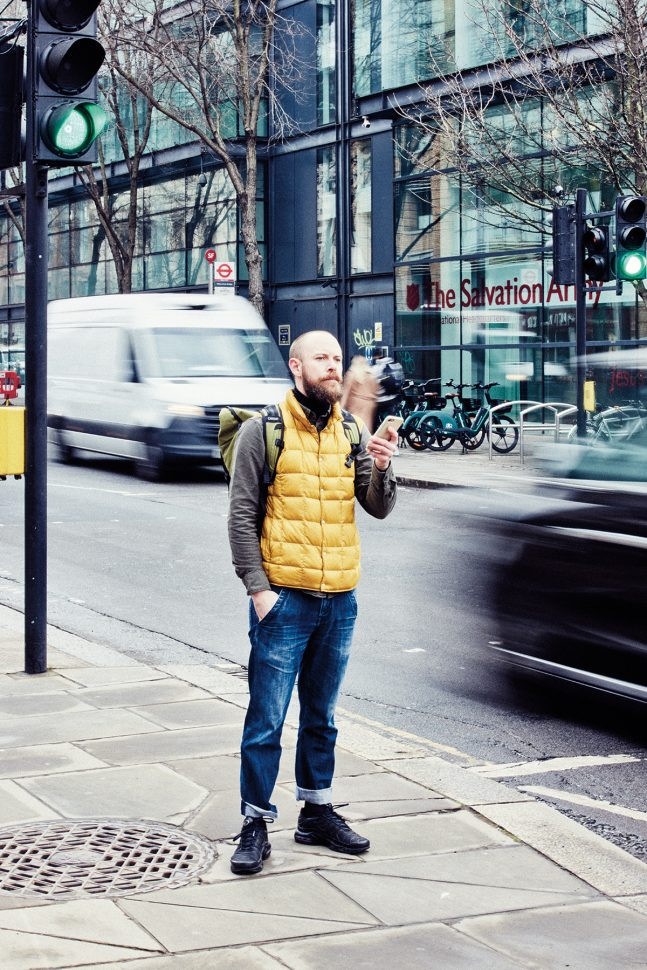 Taxi navigating city streets as alternative transport
Taxi navigating city streets as alternative transport
Having sold my car years ago due to running costs, cabs are now a rare, luxurious indulgence reserved for particularly chaotic mornings. Parking is a nightmare, and congestion charges add insult to injury, making daily car commutes impractical. Today, however, I’m embracing the cab experience, despite the anticipated extravagance.
Race day dawns with rain, and the cab app confirms surge pricing. Cars are supposedly two minutes away, offering a tempting extension to breakfast and shelter from the downpour. Ten minutes later, rechecking the app and inputting my destination reveals increased wait times, but still just five minutes until my driver arrives.
Five minutes pass, and my driver vanishes from the app. Stress starts to creep in as I await a replacement. Finally, a cab arrives at 8:31. Beating yesterday’s train time is now impossible, and punctuality is compromised. On the bright side, the air-conditioned car offers a comfortable, dry passage to work in relaxed clothing. Even in traffic, the ease and comfort are undeniable perks.
Ultimately, arrival at 9:12. Discounting the extra breakfast time, the cab commute took 55 minutes, significantly slower, and definitively not the fastest transport option today. The £25 fare further cements its unsustainability as a regular commuting solution.
E-bike Commute: Speed and Efficiency Combined
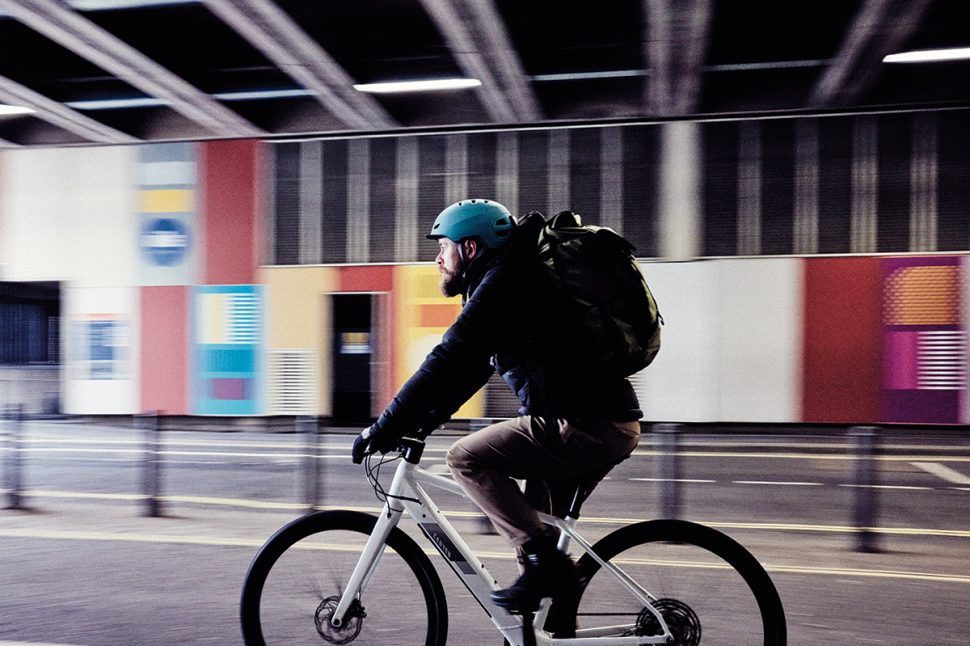 Rider on an e-bike using cycle path for fast commute
Rider on an e-bike using cycle path for fast commute
Compared to the train and cab, cycling offers a more tranquil commute. My usual pushbike journey takes around 35 minutes. Hopes are high for a significantly faster commute on an e-bike. My established route prioritizes quiet streets and paths, starting along the canal, weaving through parks, and finally navigating quieter back roads.
The faster Cycle Superhighway towards the City is generally avoided due to congestion and perceived rush-hour dangers from both motorists and cyclists.
Helmet secured, I set off at 8:10 am and am immediately struck by the e-bike’s responsiveness. The pedal assist engages instantly with minimal effort. A test ride the night before would have been wise, rather than learning the ropes on the canal path this morning! Near-dunking avoided, I reach the park in record time.
E-bike mastery achieved, I cruise along, enjoying the fresh air and relaxed pace. Progress is excellent, prompting thoughts of a leisurely coffee stop. Continuing on, I seamlessly link paths and traffic-calmed routes, bypassing busier car-dominated areas.
 E-bike rider navigating city streets quickly
E-bike rider navigating city streets quickly
Navigating busier streets closer to the office and encountering pedestrian traffic, it’s clear I’m well ahead of schedule. The e-bike’s speed necessitates heightened awareness, weaving through traffic with confident assertiveness, easily keeping pace with both bikes and cars.
Arriving at the office cycle store, the time reads 28 minutes. A staggering 27 minutes faster than the car, 11 minutes quicker than the train, and a valuable seven minutes shaved off my regular bike time. Crucially, I arrive feeling fresher and more relaxed. Perhaps that coffee stop is on the cards for tomorrow.
Anatomy of a Commuter E-bike for Speed
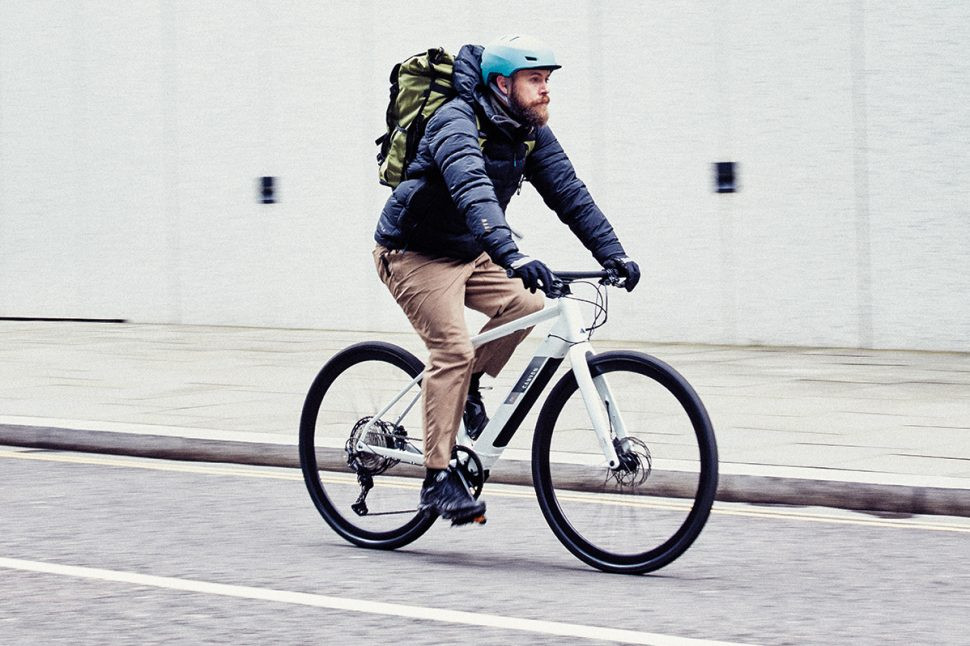 Components of an e-bike highlighting motor and battery
Components of an e-bike highlighting motor and battery
Choosing the Fastest Form of Transport: Two Wheels
My ride of choice, the Canyon Roadlite:ON platform, starting at £3,299, is just one option. Your ideal e-bike might differ, potentially being more budget-friendly. Space constraints might prioritize a folding e-bike. For those seeking the fastest and most economical city transport, numerous commute-ready electric bikes are available from as little as £1,099. Cycle to work schemes and leasing options further enhance accessibility. Providers include The Green Commute Initiative, GoGeta.Bike, and Cyclescheme.
About the Canyon Roadlite: ON
Comfort: Designed as a fast, efficient bike for sporty riders. For a more relaxed commute prioritizing comfort over outright speed, upright and relaxed geometry e-bikes are worth considering.
Motor and battery: For shorter commutes, a smaller battery capacity suffices, reducing weight and cost. Consider battery range based on your typical commute distance.
Wheels: Commuter e-bikes often feature large-diameter wheels and moderate-width tires, balancing speed and efficiency with versatility for varied terrain.
Extras: The Canyon boasts a minimalist design. Regular commuters might benefit from adding practical accessories like racks, lights, and mudguards for enhanced utility and safety.
Train vs Car vs E-bike: Fastest and Cheapest Transport Breakdown
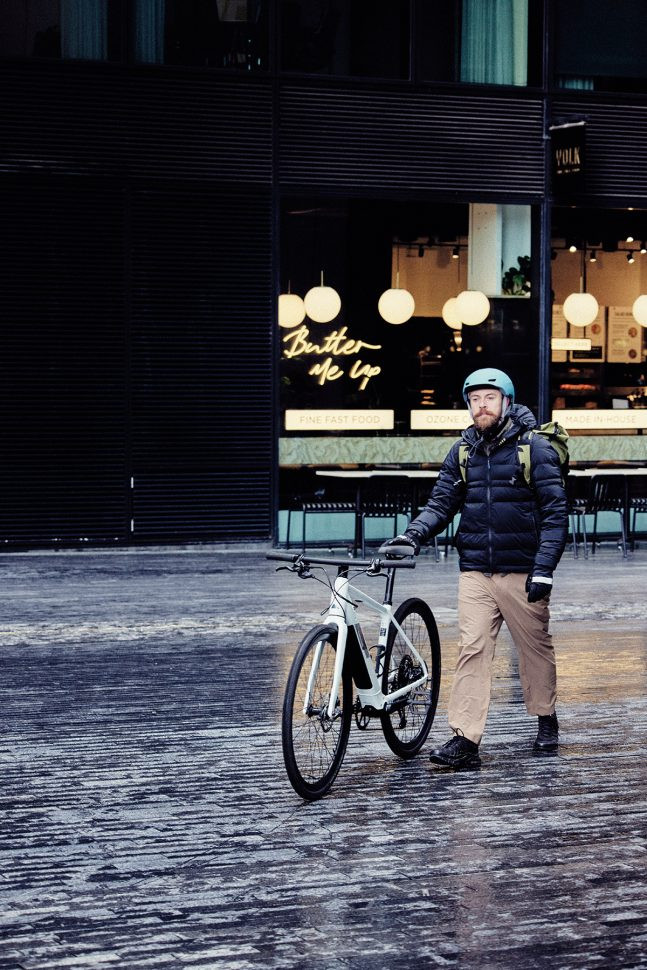 Comparison table of train, car, and e-bike commute times and costs
Comparison table of train, car, and e-bike commute times and costs
Train
My usual method. Reliable and relatively quick, but prone to overcrowding and discomfort.
Total journey time: 39 minutes
Upfront cost: None
Cost: £3.20
Pros
- No need for cycling gear at work. Affordable fare and generally reliable service.
Cons
- Crowded stations and trains. Lack of exercise and potential for poor air quality. Susceptible to delays and strikes.
Car
The most comfortable option, but the slowest and most expensive on this occasion.
Total journey time: 55 minutes
Upfront cost: None
Cost: £24.76
Pros
- Comfortable and relaxed commute.
Cons
- Expensive. Traffic delays. No exercise.
E-bike
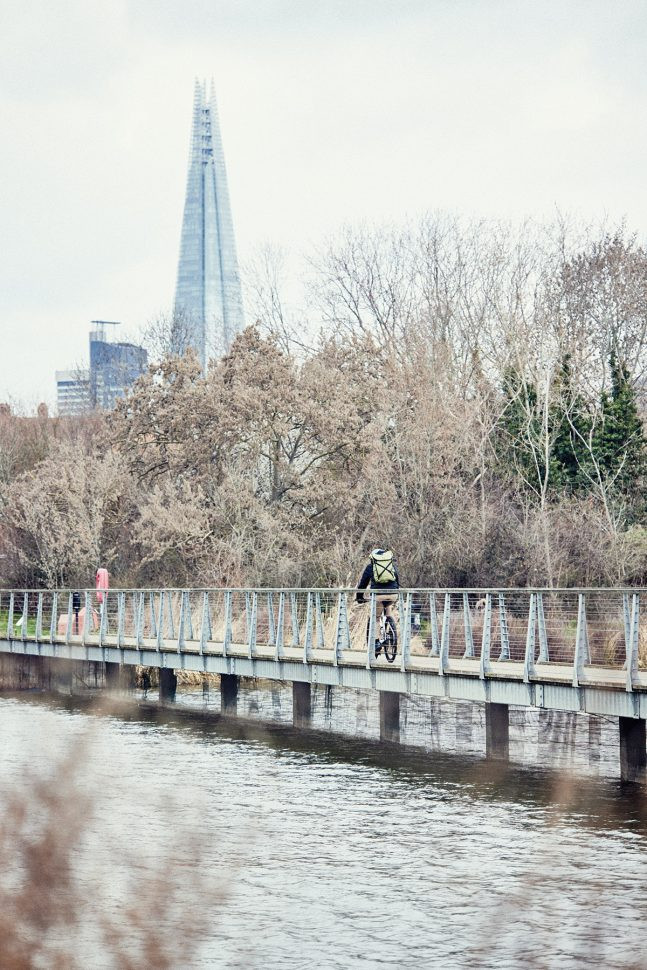 E-bike as fastest transport option in city commute
E-bike as fastest transport option in city commute
The clear winner. Fastest of the three, combining speed with fresh air and exercise. The Fastest E Bike proves its worth.
Total journey time: 28 minutes
Upfront cost: E-bikes from approximately £1,000 (and even cheaper options available)
Cost: 2.2p (0.4p per mile electricity x 5.5 miles)
Pros
- Fastest and most reliable transport. Motor assistance ensures a fresh arrival. Pleasant route options.
Cons
- Helmet required. Initial bike investment is a significant upfront cost.
Looking for tips on starting your cycling commute? We’ve got you covered.
[Add Cycling Electric to your Google News feed

